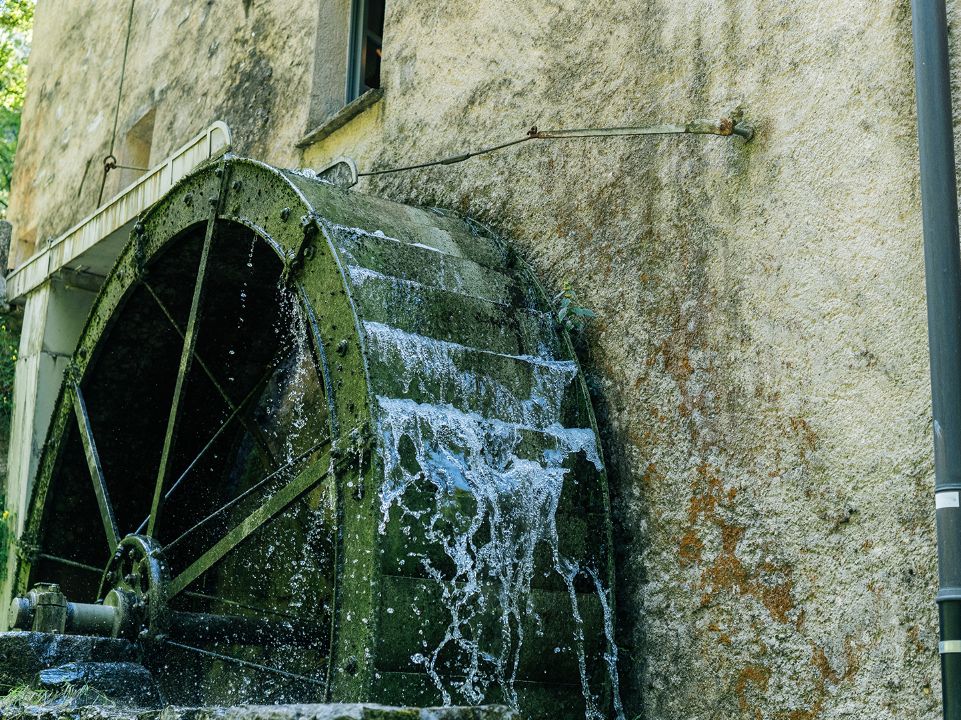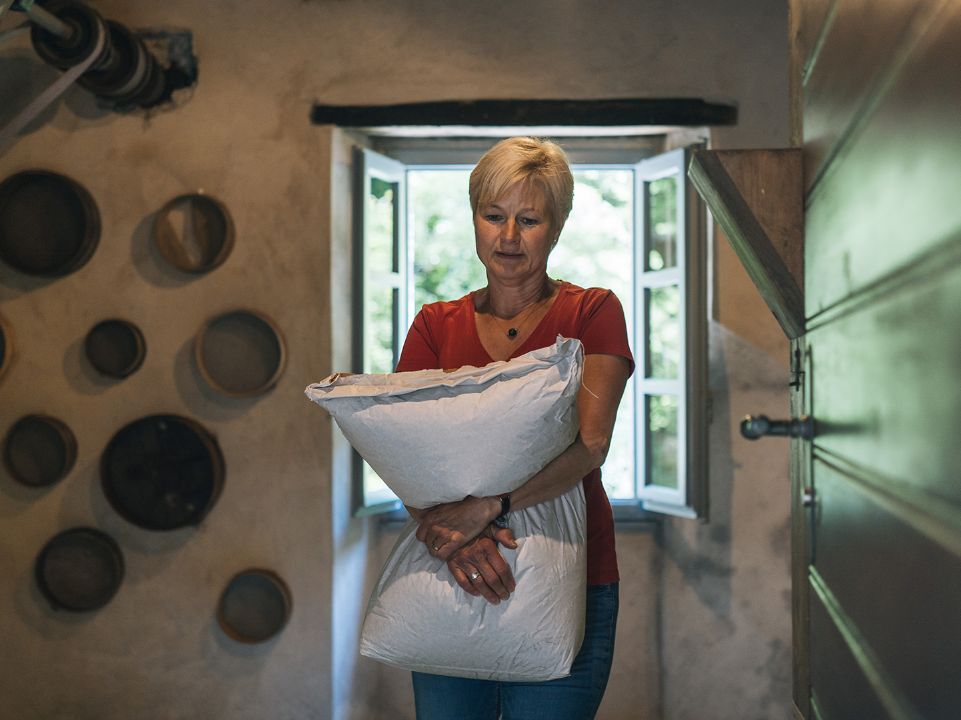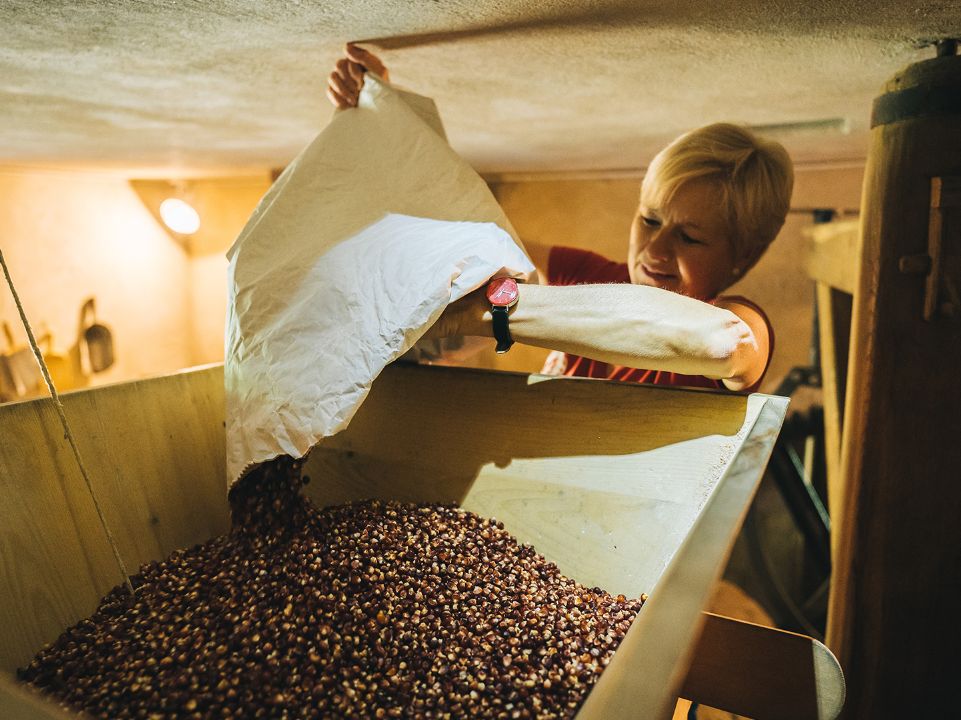The historic Bruzella Mill in the stunning Muggio Valley is more than just a great place for a photo op or an educational visit – it also grinds rare red corn into delicious polenta flour all year round.
THE CHARACTER
Irene Petraglio, milleress
The architect said to me: The mill works. But it’s up to you to work out how!



















